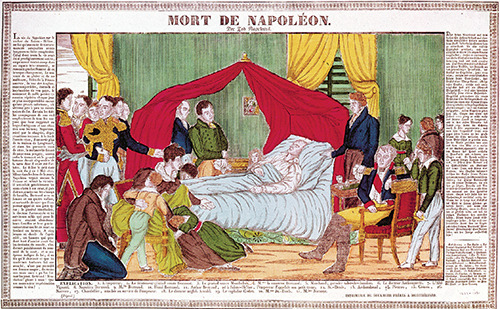
This Article From Issue
May-June 2014
Volume 102, Number 3
Page 232
DOI: 10.1511/2014.108.232
THE SECRET LANGUAGE OF COLOR: Science, Nature, History, Culture, Beauty of Red, Orange, Yellow, Green, Blue, and Violet. Joann Eckstut and Arielle Eckstut. 240 pp. Black Dog and Leventhal Publishers, 2013. $29.95.
Perception of color is inseparable from some of our truest visual pleasures: viewing the deep green of an Irish landscape, discerning the blue tint of Sirius in the night sky, pondering the saturated hues of a Cézanne, delighting in a flush of red brightening a beloved’s cheek, donning cobalt-blue mittens on an overcast day. Beyond the aesthetic, color can be life saving or life giving for flora and fauna alike. The discussions within The Secret Language of Color, by Joann Eckstut (one of 12 color experts who create the famed annual Color Association of the United States forecasts) and Arielle Eckstut (an author and color consultant), unspool from a fascinating conundrum: Fundamental as it is to life on Earth, color may be said to exist only through our perception of it.

A large-format book packed with vibrant photos and illustrations, its chapters alternate between areas of science and colors that provide useful jumping-off points for discussion. Some of the connections are more obvious than others: A treatise on green follows a chapter on botany, whereas an exploration of the science of red hues and their significance across history, art, and culture follows a chapter on physics and chemistry.
The science of dye composition is an especially interesting facet of the authors’ discussion. The tints humans have used over the millennia, along with their derivations and uses, reveal much about a culture: trade practices, production processes, status markers, art and design principles, and the physical environment. In many cultures access to certain hues was tied to political and economic power. The price of certain dyes could also be more than monetary: Access to goods imbued with their color could have catastrophic physical consequences. Take, for example, Scheele’s Green, a pea-colored dye that emerged in the latter decades of the 18th century, and Paris Green, a lovely emerald shade made available to consumers in 1814 that soon surpassed it in popularity. These dyes were versatile, tinting paints, wallpapers, fabrics, candles, medicines, and sweets. Unfortunately, both were laced with arsenic. In 1861 an astute doctor discerned the chemical’s toxicity, yet arsenic greens remained on the market in many products for several decades until other researchers confirmed the earlier findings.

From The Secret Language of Color.
Color plays a vital role to procreation in the wild, occasionally a symbiotic one between plants and animals. Referring to Amazon water lilies as beetle discotheques, the authors explain how the flowers bloom a bright white at first, their temperature increasing to help diffuse the lily’s fragrance. Scarab beetles become ensnared within the flower when it closes overnight. In exchange for pollination, the blooms provide a choice spot for the trapped beetles to feed on tasty stamens and mate. Over the course of the evening, the lily becomes tinged with rose. At dawn, the flowers transition to a pink hue, open their petals, and release their sated captives, new generations of plant and beetle each more assured. Ostentation takes energy, however. Hence, some creatures have evolved their way to a compromise, parading their colors when necessary but conserving energy at other times. The authors present the example of the scarlet tanager. During mating season, the male displays spectacular crimson plumage; afterward it molts, the snappy red feathers replaced with ones far more subdued and similar to the female’s.
Despite its somewhat rambling approach and sidebar headlines that skew a bit too cute, The Secret Language of Color fascinates with its breadth, entrances with its vividness, and beguiles with its exuberance. Its discussions of the physics of color and concepts such as additive and subtractive color and simultaneous contrast are first rate. An informative stunner, this is one book that keeps the intellect and the optical rods and cones well entertained.
Dianne Timblin is interim book review editor for American Scientist and author of the poetry chapbook A History of Fire (Three Count Pour, 2013). Her ongoing series of lo-fi collages may be found at Art of Salvage.

American Scientist Comments and Discussion
To discuss our articles or comment on them, please share them and tag American Scientist on social media platforms. Here are links to our profiles on Twitter, Facebook, and LinkedIn.
If we re-share your post, we will moderate comments/discussion following our comments policy.